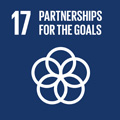- Docente: Barbara Saracino
- Credits: 8
- SSD: SPS/07
- Language: Italian
- Moduli: Barbara Saracino (Modulo 1) Barbara Saracino (Modulo 2)
- Teaching Mode: Traditional lectures (Modulo 1) Traditional lectures (Modulo 2)
- Campus: Bologna
-
Corso:
Second cycle degree programme (LM) in
Media, Public and Corporate Communication (cod. 5703)
Also valid for Second cycle degree programme (LM) in Politics Administration and Organization (cod. 9085)
Learning outcomes
L’insegnamento si propone di fornire alle studentesse e agli studenti gli strumenti teorici, analitici e pratici per comprendere i rapporti tra scienza, tecnologia e società. Scopo del corso è introdurre le studentesse e gli studenti ai principali modelli di comunicazione pubblica della scienza e della tecnologia. Attraverso attività seminariali e laboratoriali, il corso ruoterà intorno ad alcune parole chiave: divulgazione, dialogo e partecipazione, expertise e pubblici; particolare attenzione sarà dedicata al public engagement, alle azioni e agli atteggiamenti sia dei produttori di conoscenza, sia dei vari settori del pubblico. Al termine del corso ci si aspetta che le studentesse e gli studenti acquisiscano la conoscenza di questi concetti e le competenze per usarli nell’analisi delle trasformazioni generali dei rapporti tra scienza, tecnologia e società e dei caratteri specifici dei processi di comunicazione pubblica della scienza e della tecnologia.
Course contents
The course aims to provide students with the theoretical, analytical and practical tools to understand the relationships between science, technology and society. The aim of the course is to introduce students to the main public communication models of science and technology. Through seminars and laboratory activities, the course will revolve around a few key words: dissemination, dialogue, participation, expertise and audience. Particular attention will be paid to public engagement, which includes the actions and attitudes of both the knowledge producers and the various sectors of the audience. At the end of the course, students are expected to properly use these concepts in the analysis of the transformations of the relationships between science, technology and society as well as in the analysis of the specific characteristics of the public communication processes of science and technology.
The first part of the course will deal with the main approaches developed in the field of social studies on science and technology, with attention paid both to the authors and to the concepts and theories produced. The second part of the course will address the relationships between science, technology and society. Particular attention will be paid to public communication models of science and technology; the interactions between scientific experts, policy makers and citizens; public discourse and public perception of science and technology; transformations in the public image of science and scientists.
Readings/Bibliography
M. Bucchi (2010), Scienza e Società, Milano, Raffaello Cortina.
M. Bucchi, B. Trench (eds.) (2016), The Public Communication of Science, 4 vol., London and New York, Routledge.
P. Magaudda, F. Neresini (a cura di) (2020), Studi sociali sulla scienza e la tecnologia, Bologna, Il Mulino.
T. Gascoigne et al. (eds.) (2020), Communicating Science. A Global Perspective, ANU Press, DOI: http://doi.org/10.22459/CS.2020 .
Teaching methods
Lectures; seminars and laboratory activities; in class- presentations of readings and analysis of case studies by students.
Assessment methods
Students who regularly attend classes will have the opportunity to present readings chosen by each student from a list proposed by the teacher and analyse case studies of public engagement activities. These in class-activities will contribute to the final grade.
Students who do not regularly attend classes can take an oral examination on texts and case studies to be agreed with the teacher.
Teaching tools
Students will be provided with the slides used by the teacher during the lessons and readings and support materials for in-class presentations and case study analysis.
Office hours
See the website of Barbara Saracino
SDGs


This teaching activity contributes to the achievement of the Sustainable Development Goals of the UN 2030 Agenda.
